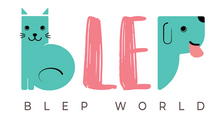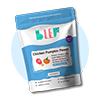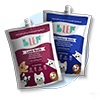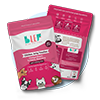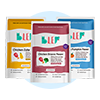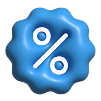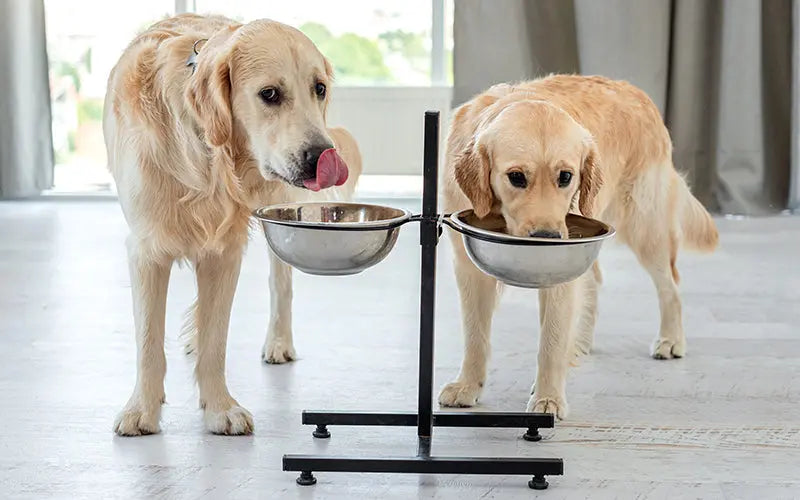There’s a moment in every pet parent’s journey where they pause and wonder: Am I feeding my dog the right way? It might come after a routine vet visit, a sudden weight change, or just a passing thought as you fill their bowl. And it’s not just about how much food, it's about how often, what kind, and whether their needs are really being met.
Feeding a dog isn’t a plug-and-play task. It’s not about doing what a label says and moving on. Like humans, dogs go through different life stage- puppyhood, adulthood, senior years, and each one brings changes in energy levels, digestion, and dietary needs. Yet many owners fall into the trap of “set it and forget it,” assuming one method will always work. But that’s rarely the case.
The Role of Life Stage in Feeding Frequency
The answer to “how many times should I feed my dog” isn’t the same for everyone. It shifts with age, metabolism, and even emotional needs.
Puppies need more meals because they grow fast and burn a lot of energy.

-
Under 3 months: 4 small meals a day
-
3–6 months: 3 meals a day
-
6–12 months: Still 3 meals (depending on breed and size)
These regular meals help with healthy growth and keep their blood sugar steady, especially for smaller breeds that are more prone to energy dips.
Adult dogs usually do well with 2 meals a day, spaced about 8–12 hours apart. This routine keeps them full, supports digestion, and helps avoid begging or overeating. Some dogs might manage fine with just one meal a day, but most feel better and behave better with two.
Senior dogs might still eat twice a day, but if they have trouble eating or have health issues, smaller and more frequent meals can be easier on them. If your older dog suddenly isn’t finishing meals or starts skipping them, it might be time to adjust their schedule or check in with your vet.
How Much Food Is Right
Even with frequency figured out, portion control is its own challenge. It's easy to overfeed, especially when a dog looks longingly at the bowl like it's their last meal ever. But overfeeding can lead to weight gain and health problems.
A Dog Diet Calculator can help you figure out how many calories your dog needs each day. It considers their age, weight, breed, and activity level to give a more accurate picture than just reading the back of a dog food bag.
Here are some signs to check if you’re feeding the right amount:
-
You can feel, but not see, their ribs
-
They’re not losing or gaining weight suddenly
-
They seem satisfied and not overly hungry after meals.
If something seems off, adjust the portion or ask your vet for guidance.
Why Protein for Dogs Is So Important
Dogs, just like us, need protein to stay healthy. It helps build muscles, keeps their immune system strong, and supports energy. Common high-quality protein sources include:
-
Animal-based proteins: chicken, lamb, beef, fish, turkey, and eggs
-
Plant-based proteins: lentils, chickpeas, peas, soy, and quinoa (when properly processed and balanced)
But, whether the protein comes from meat or plant sources, it is important to see if it's easy to digest, contains all the essential amino acids your dog needs and appropriate for their life stage.
Good-quality dog food should meet AAFCO (Association of American Feed Control Officials) nutrition standards. If the dog is staying active and alert, has a shiny coat and healthy skin, and seems happy and full after eating, chances are their food is doing a good job. If not, it might be time for a change.
Feeding Time Is More Than Just a Routine
Most pet owners consider feeding time just a task on a to-do list. But it’s part of how dogs experience routine, safety, and connection. And dogs, more than most animals, crave routine.
Knowing when food is coming helps keep your furry friend relaxed. Inconsistent feeding can cause anxiety or overeating, while regular meals support both emotional stability and physical health.
But here’s an important thing: When your dog loses interest in food, suddenly eats too fast, or starts guarding their bowl, it’s their way of telling you something. Those changes are worth listening to.
Feed with Awareness, Not Just Habit
So, how many times should you feed your dog?

-
Puppies: 3–4 times a day
-
Adults: Usually 2 times a day
-
Seniors: 2 times, or smaller, more frequent meals depending on health
But more important than following a strict rule is paying attention to your dog. Use a Dog Diet Calculator to guide you. Make sure their food has enough protein, and don’t forget to watch how they look and behave.
Feeding your dog isn’t about being perfect; it’s about being present. Your dog depends on you not just for food, but for care. And at BLEP World, we’re here to help you do just that with tools, tips, and nutrition solutions that put your dog’s health first.
Looking to explore more healthy treats and care tips for your furry friend? Check out our other guides like Can Dogs Eat Apples?, Can Dogs Eat Blueberries?, Can Dogs Eat Strawberries?, Can dogs Eat Mango?, Dog Food for Weight Loss, Raw v/s cooked meat for dogs, Home Remedies to cure tick fever, Natural Dog Food, How many times should I feed my dog?, Things you should do to keep your pet healthy, Types of Dog Food, Can Dogs Eat Mango, Can Dogs Eat Strawberries, Why Do Dogs Licks You?, How to find Good Dog Food in India?, Dog Diet Nutrition guide, Dog gut Health, and How Prebiotics and Probiotics can improves your dogs digestion. Each guide is designed to help you make better food choices for your dog because a happy dog starts with the right diet.
